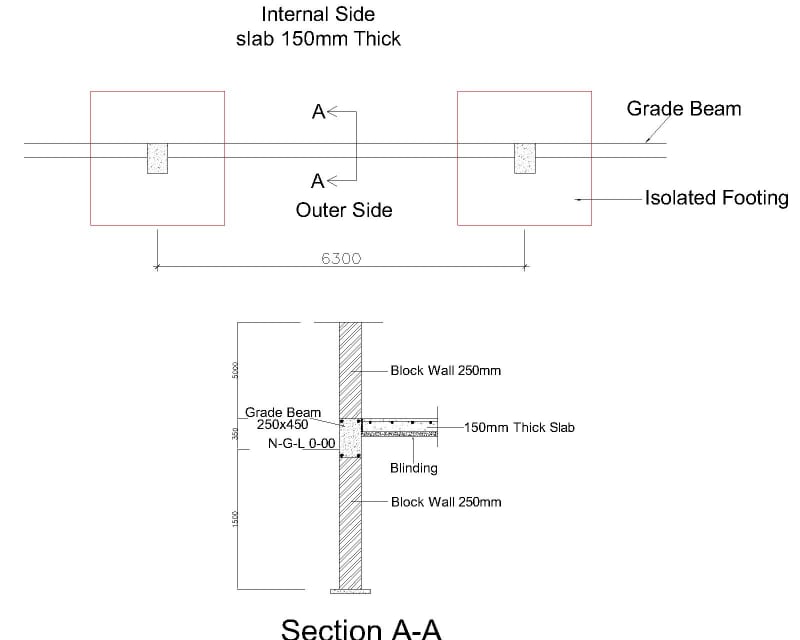I am designing a grade beam which is connected with the isolated footing pedestal both side, furthermore the grade beam is carrying the self-weight of block wall so I have few confusion as mentioned below can someone please suggest in this regards.
1: grade beam is carrying the self-weight of block wall, so will this grade beam transfer the load on isolated pedestal, however the grade beam is fully supported by the block wall below??
2: internal slab should be monolithic with the grade beam or there should be isolation between grade beam and slab which option will be good in this circumstances??

1: grade beam is carrying the self-weight of block wall, so will this grade beam transfer the load on isolated pedestal, however the grade beam is fully supported by the block wall below??
2: internal slab should be monolithic with the grade beam or there should be isolation between grade beam and slab which option will be good in this circumstances??

